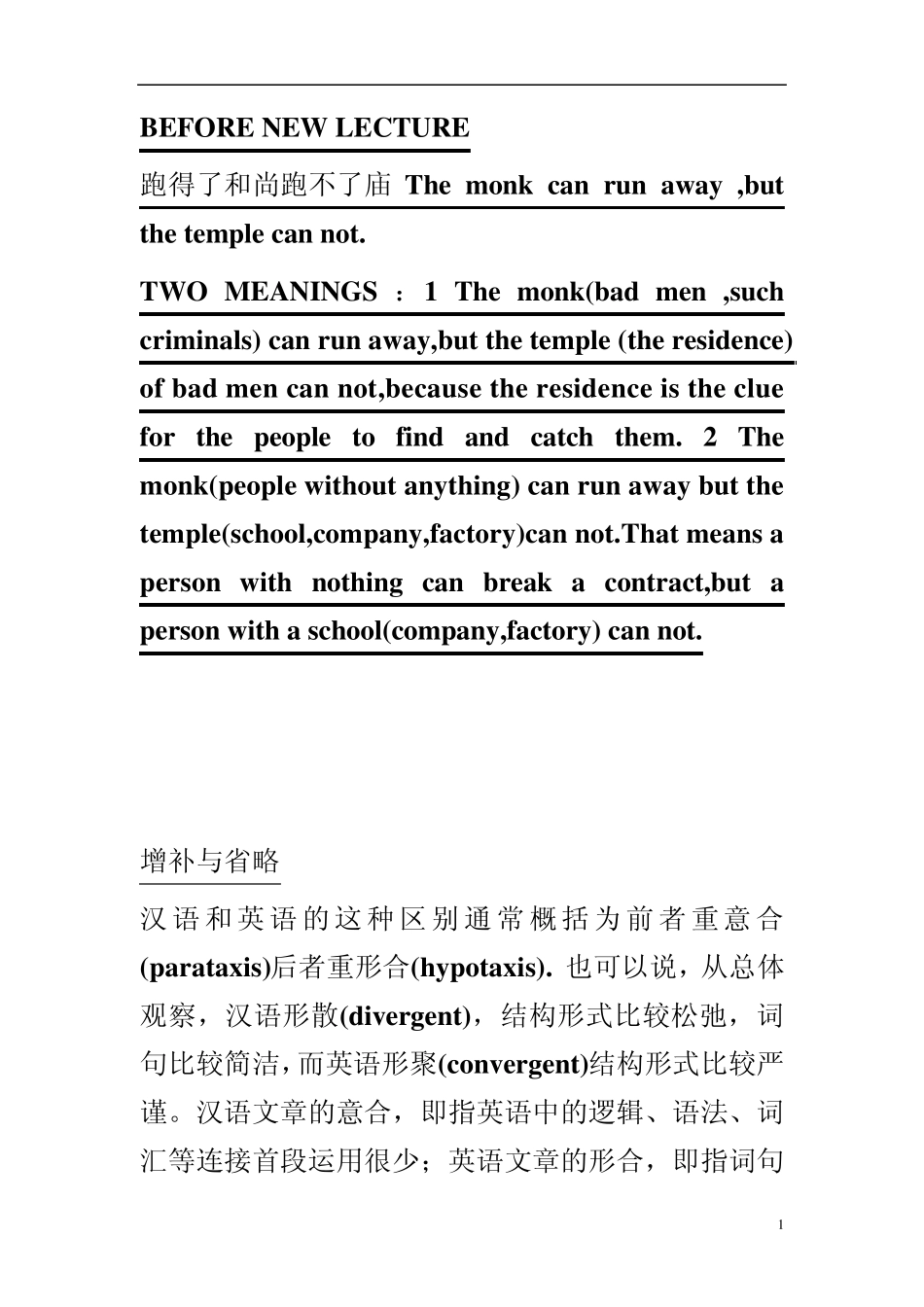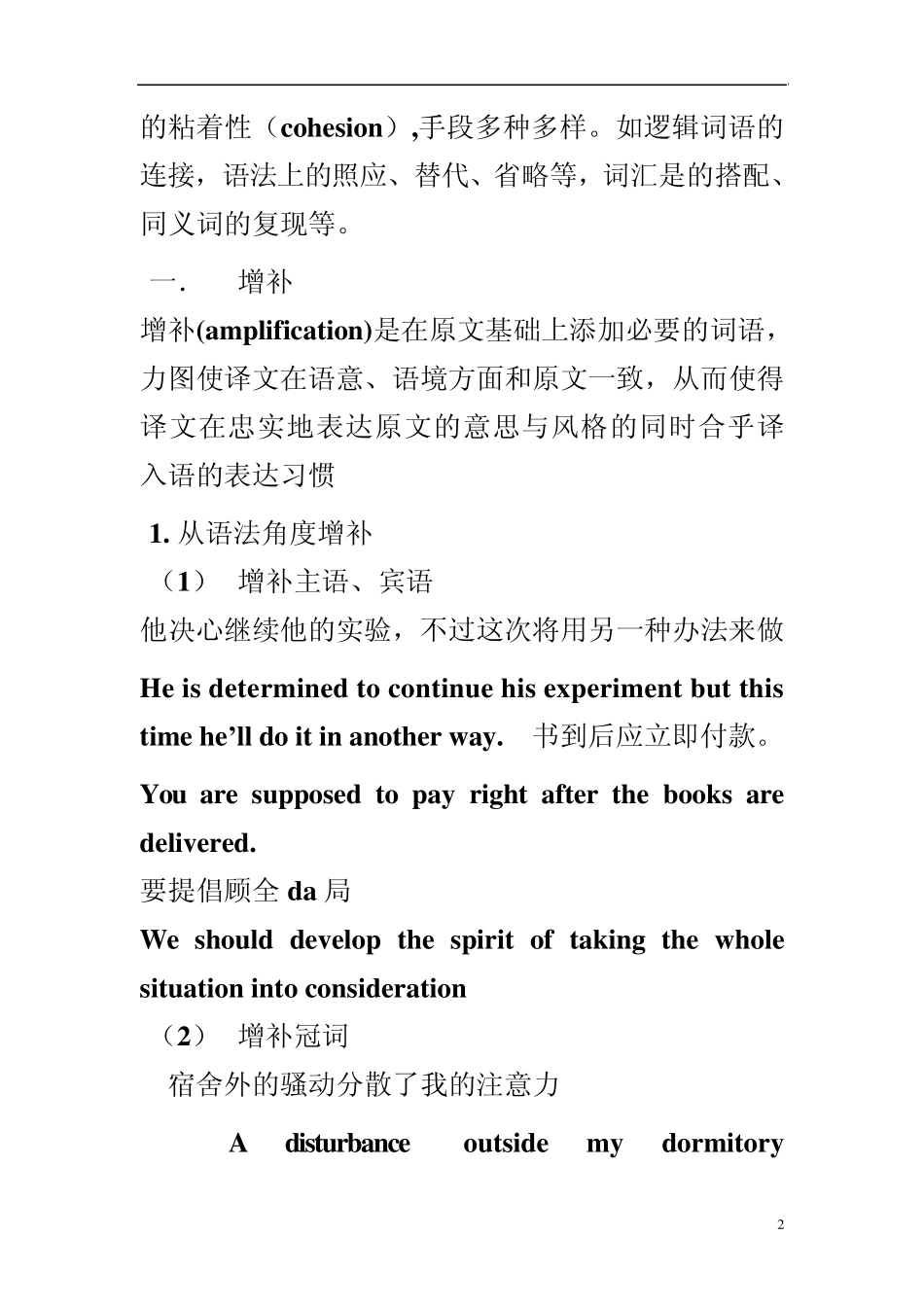1 BEFORE NEW LECTURE 跑得了和尚跑不了庙The monk can run away ,but the temple can not. TWO MEANINGS :1 The monk(bad men ,such criminals) can run away,but the temple (the residence) of bad men can not,because the residence is the clue for the people to find and catch them. 2 The monk(people without anything) can run away but the temple(school,company,factory)can not.That means a person with nothing can break a contract,but a person with a school(company,factory) can not. 增补与省略 汉语和英语的这种区别通常概括为前者重意合(parataxis)后者重形合(hypotaxis). 也可以说,从总体观察,汉语形散(divergent),结构形式比较松弛,词句比较简洁,而英语形聚(convergent)结构形式比较严谨。汉语文章的意合,即指英语中的逻辑、语法、词汇等连接首段运用很少;英语文章的形合,即指词句 2 的粘着性(cohesion),手段多种多样。如逻辑词语的连接,语法上的照应、替代、省略等,词汇是的搭配、同义词的复现等。 一. 增补 增补(amplification)是在原文基础上添加必要的词语,力图使译文在语意、语境方面和原文一致,从而使得译文在忠实地表达原文的意思与风格的同时合乎译入语的表达习惯 1. 从语法角度增补 (1) 增补主语、宾语 他决心继续他的实验,不过这次将用另一种办法来做 He is determined to continue his experiment but this time he’ll do it in another way. 书到后应立即付款。 You are supposed to pay right after the books are delivered. 要提倡顾全 da 局 We should develop the spirit of taking the whole situation into consideration (2) 增补冠词 宿舍外的骚动分散了我的注意力 A disturbance outside my dormitory 3 distracted my attention 你认为我花园里那红白相间的玫瑰怎么样? How do you like the red white roses in my gardens? (3) 增补连词或连接性词语,如and ,or , but ,for , so...that … , too… to..., as well as, in general, with regard to, in particular 等 我告诉他该走了,他匆匆忙忙地走了 I told him it was time to go and he hurried away. 变...


